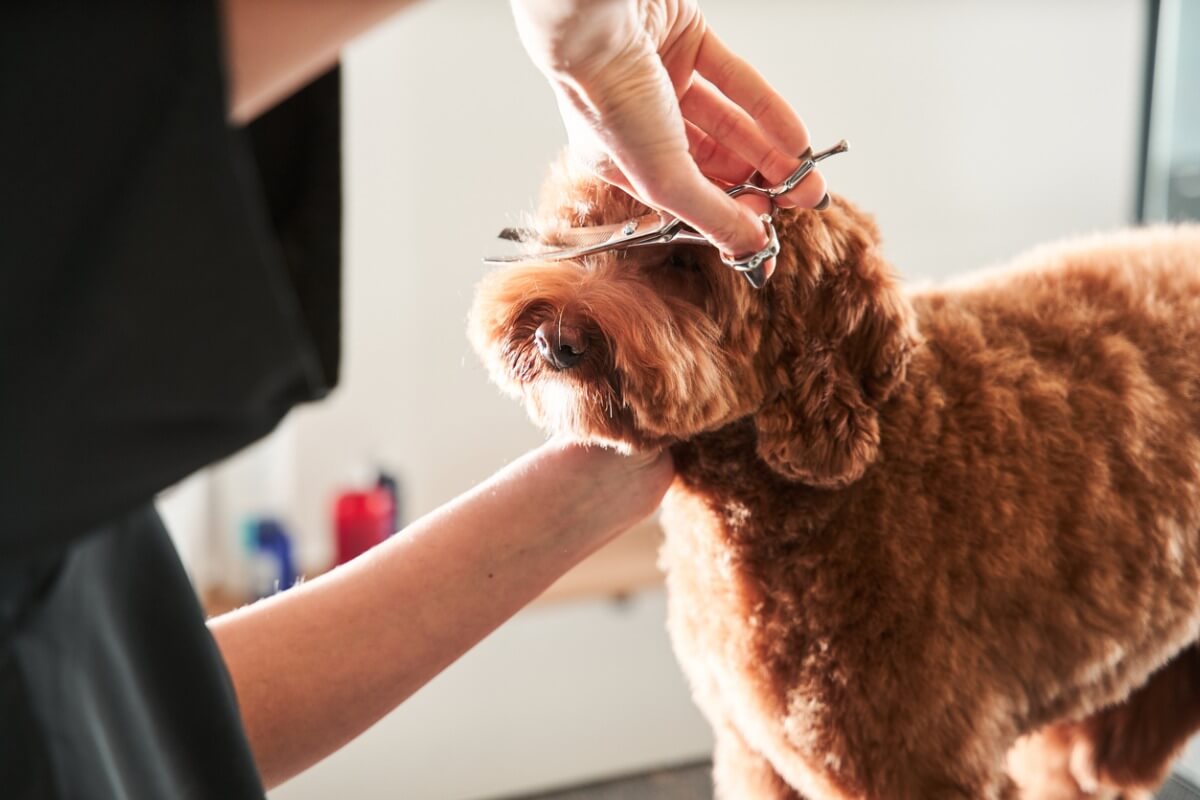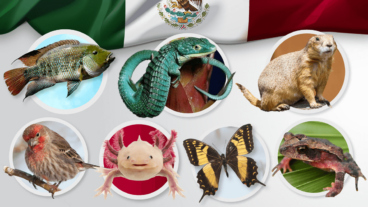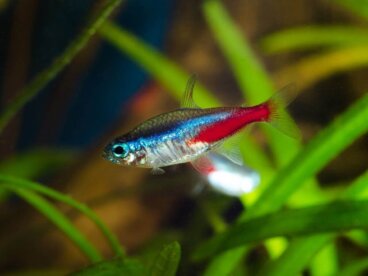The Labradoodle: Characteristics and Care


Written and verified by the biologist Cesar Paul Gonzalez Gonzalez
Over the past few weeks, here at My Animals we’ve been bringing you many of the fairly recent hybrid, or cross dogs, many of them crossed with poodles. Today’s one is no exception. The Labradoodle is a hybrid breed that comes from a cross between (yes, you’ve guessed it!) a Poodle and a Labrador Retriever.
This new type of dog exhibits characteristics of both parents and has become famous for having “the best of both”. It has an amazing appearance and an affectionate temperament, making it an excellent pet for the whole family.
Designer dogs, also called hybrids, are produced by crossing two pure breeds. This means that they’re officially mongrels or “impure” and, therefore, international associations such as the Kennel Club don’t recognize them as proper breeds in their own right. Keep reading this article to learn more about the beautiful Labradoodle.
The cross between a Labrador and a poodle
Designer dogs are the result of the desire to combine the characteristics of two different breeds. This allows to improve certain aspects of their behavior, health or aesthetics. The only problem is that, in order to achieve this, you need to use established (pure) breeds whose traits don’t change much. Otherwise, it would be impossible to predict the characteristics of the new dog.
The Labradoodle was born with the aim of producing a dog with the service skills of the Labrador, but with the hypoallergenic coat of the poodle. The combination is a great success, as the lineage has great utility and is suitable for almost any guardian. In fact, these dogs have become famous for serving as guide, assistance, or therapy dogs.

Origin of labradoodle
Wally Conron was the first breeder to cross a poodle and a Labrador. The idea came from a letter sent to Conron in the 1980s, in which he was asked for a dog that would serve as a guide dog and that wouldn’t cause allergies. After much work, he succeeded in producing for the first time a Labradoodle named “Sultan”.
The institution that was in charge of producing the new breed was the Royal Guide Dogs Association of Australia, which Conron was a member of. This means that the crossing between the two dogs was carefully researched to ensure its success. In fact, the Labradoodle became famous and in a short time became one of the most sought after dogs.
Characteristics of the breed
This breed can come in 3 different sizes: standard, medium, and miniature. The sizes depend entirely on the type of poodle selected. In general, the Labradoodle can be between 35 and 60 centimeters tall (14 to 24 inches)
Designer dogs don’t usually maintain the same characteristics between them. This means that even between dogs from the same litter (siblings) there’s a lot of variation. For this reason, the Labradoodle exhibits different coats, ranging from smooth to curly, while the color can be golden, white, black, brown, red, silver or a combination of these.
Personality
The Labradoodle is an intelligent, calm, affectionate, and somewhat energetic dog, which makes it an excellent choice as a pet. It’s able to socialize very well with any person or dog, although some dogs are a little more shy than others. Keep in mind that it’ll be friendlier if you can get it used to being with strangers from a young age.
This breed doesn’t usually bark too much, nor does it get very restless, which makes it easy to control. Even so, it’s best to start its training with positive reinforcement. The Labradoodle is a fast learner and follows the commands of its owners very well. For this reason, they make great service dogs and can be given difficult tasks.
Main care needs
This hybrid breed can fit in well in almost any home, but their size isn’t suitable for apartments. It’s best if they have their own space, such as a garden, so they can enjoy the outdoors, and not live in a confined space.
These dogs are quite energetic and require an hour of exercise a day to feel at ease. Remember that they come from a very active breed like the Labrador, so it’s better to give them a little more attention so they can expend all their energy. If they get bored or don’t get enough physical activity, they’re very likely to exhibit destructive behavior.
The maintenance of their fur will be different in each individual animal, so experts recommend that they’re brushed at least two or three times a week. Feel free to increase this frequency if you feel it’s necessary. In addition, this is also a good time to spend time with your dog and strengthen the relationship.
One of the biggest problems you can have with the Labradoodle is the damp and dirt that its fur can harbor. This allows various pathogens to develop that can infect your dog. When it gets wet, make sure you dry its whole body very well, especially its ears, otherwise it’ll be more susceptible to certain diseases.
Common diseases
Hybrid breeds enjoy better health compared to their progenitors. However, this doesn’t make them immune to ailments, so it’s best to be on the lookout for any warning signs. Some diseases that are common in the Labradoodle are as follows:
- Otitis is an infection of the skin of the dog’s ear. It’s characterized by inflammation, redness, and itching, which makes the dog feel very uncomfortable. The droopy ears and the Labradoodle’s coat make these infections more frequent.
- Hip dysplasia: This is a genetic disease that causes problems in the area between the femur and the hip. It’s degenerative and, in severe cases, causes paralysis of the hind legs.
- Patellar luxation: This is a slippage of the bone that supports the knee joint (patella). Symptoms can range from mild pain to an inability to move.
- Osteochondritis dissecans: This is a congenital disease that causes poorly formed cartilage, which becomes loose and forms a kind of “stone” that causes the dog pain when moving. Labradors are usually one of the breeds most affected by this problem, so the Labradoodle can also get it.
- Epilepsy: Frequent seizures that aren’t caused by any pre-existing pathology.
- Allergy: An excessive reaction of the immune system to certain environmental substances (allergens). It causes inflammation, irritation and itching, although, in some cases, it can even seriously affect breathing. Allergies can be triggered by food, insect bites, or medications.
- Retinal dysplasia: A genetic disease that seems to affect Labradoodles the most. It causes folds in the retina that impede the dog’s vision. In severe cases, it detaches completely.
- Diabetes: This is similar to human diabetes. It’s a problem that impedes the lowering of blood sugar levels, which, in the long term, causes complications with different organs.
- Progressive retinal atrophy: A congenital disease that causes progressive loss of vision in dogs. It usually goes unnoticed by owners, as dogs don’t show warning signs unless the problem has worsened.
- Hypothyroidism: This is a hormonal imbalance that causes insufficient production of thyroid hormones, which are essential during development. The symptoms are very diverse, but it’s characterized by making the dog more susceptible to disease.

As you’ll have seen, the Labradoodle is a very obedient and loving breed that can make an excellent choice as a pet. However, it needs certain specific care and attention, to ensure that there’s no problem in their coexistence. Acquiring a dog is a great responsibility, because you need to look after their welfare throughout their whole lives. If you look after them well, they’ll surely reward you with bucketloads of love!
Here’s another poodle cross you can enjoy reading about:
Over the past few weeks, here at My Animals we’ve been bringing you many of the fairly recent hybrid, or cross dogs, many of them crossed with poodles. Today’s one is no exception. The Labradoodle is a hybrid breed that comes from a cross between (yes, you’ve guessed it!) a Poodle and a Labrador Retriever.
This new type of dog exhibits characteristics of both parents and has become famous for having “the best of both”. It has an amazing appearance and an affectionate temperament, making it an excellent pet for the whole family.
Designer dogs, also called hybrids, are produced by crossing two pure breeds. This means that they’re officially mongrels or “impure” and, therefore, international associations such as the Kennel Club don’t recognize them as proper breeds in their own right. Keep reading this article to learn more about the beautiful Labradoodle.
The cross between a Labrador and a poodle
Designer dogs are the result of the desire to combine the characteristics of two different breeds. This allows to improve certain aspects of their behavior, health or aesthetics. The only problem is that, in order to achieve this, you need to use established (pure) breeds whose traits don’t change much. Otherwise, it would be impossible to predict the characteristics of the new dog.
The Labradoodle was born with the aim of producing a dog with the service skills of the Labrador, but with the hypoallergenic coat of the poodle. The combination is a great success, as the lineage has great utility and is suitable for almost any guardian. In fact, these dogs have become famous for serving as guide, assistance, or therapy dogs.

Origin of labradoodle
Wally Conron was the first breeder to cross a poodle and a Labrador. The idea came from a letter sent to Conron in the 1980s, in which he was asked for a dog that would serve as a guide dog and that wouldn’t cause allergies. After much work, he succeeded in producing for the first time a Labradoodle named “Sultan”.
The institution that was in charge of producing the new breed was the Royal Guide Dogs Association of Australia, which Conron was a member of. This means that the crossing between the two dogs was carefully researched to ensure its success. In fact, the Labradoodle became famous and in a short time became one of the most sought after dogs.
Characteristics of the breed
This breed can come in 3 different sizes: standard, medium, and miniature. The sizes depend entirely on the type of poodle selected. In general, the Labradoodle can be between 35 and 60 centimeters tall (14 to 24 inches)
Designer dogs don’t usually maintain the same characteristics between them. This means that even between dogs from the same litter (siblings) there’s a lot of variation. For this reason, the Labradoodle exhibits different coats, ranging from smooth to curly, while the color can be golden, white, black, brown, red, silver or a combination of these.
Personality
The Labradoodle is an intelligent, calm, affectionate, and somewhat energetic dog, which makes it an excellent choice as a pet. It’s able to socialize very well with any person or dog, although some dogs are a little more shy than others. Keep in mind that it’ll be friendlier if you can get it used to being with strangers from a young age.
This breed doesn’t usually bark too much, nor does it get very restless, which makes it easy to control. Even so, it’s best to start its training with positive reinforcement. The Labradoodle is a fast learner and follows the commands of its owners very well. For this reason, they make great service dogs and can be given difficult tasks.
Main care needs
This hybrid breed can fit in well in almost any home, but their size isn’t suitable for apartments. It’s best if they have their own space, such as a garden, so they can enjoy the outdoors, and not live in a confined space.
These dogs are quite energetic and require an hour of exercise a day to feel at ease. Remember that they come from a very active breed like the Labrador, so it’s better to give them a little more attention so they can expend all their energy. If they get bored or don’t get enough physical activity, they’re very likely to exhibit destructive behavior.
The maintenance of their fur will be different in each individual animal, so experts recommend that they’re brushed at least two or three times a week. Feel free to increase this frequency if you feel it’s necessary. In addition, this is also a good time to spend time with your dog and strengthen the relationship.
One of the biggest problems you can have with the Labradoodle is the damp and dirt that its fur can harbor. This allows various pathogens to develop that can infect your dog. When it gets wet, make sure you dry its whole body very well, especially its ears, otherwise it’ll be more susceptible to certain diseases.
Common diseases
Hybrid breeds enjoy better health compared to their progenitors. However, this doesn’t make them immune to ailments, so it’s best to be on the lookout for any warning signs. Some diseases that are common in the Labradoodle are as follows:
- Otitis is an infection of the skin of the dog’s ear. It’s characterized by inflammation, redness, and itching, which makes the dog feel very uncomfortable. The droopy ears and the Labradoodle’s coat make these infections more frequent.
- Hip dysplasia: This is a genetic disease that causes problems in the area between the femur and the hip. It’s degenerative and, in severe cases, causes paralysis of the hind legs.
- Patellar luxation: This is a slippage of the bone that supports the knee joint (patella). Symptoms can range from mild pain to an inability to move.
- Osteochondritis dissecans: This is a congenital disease that causes poorly formed cartilage, which becomes loose and forms a kind of “stone” that causes the dog pain when moving. Labradors are usually one of the breeds most affected by this problem, so the Labradoodle can also get it.
- Epilepsy: Frequent seizures that aren’t caused by any pre-existing pathology.
- Allergy: An excessive reaction of the immune system to certain environmental substances (allergens). It causes inflammation, irritation and itching, although, in some cases, it can even seriously affect breathing. Allergies can be triggered by food, insect bites, or medications.
- Retinal dysplasia: A genetic disease that seems to affect Labradoodles the most. It causes folds in the retina that impede the dog’s vision. In severe cases, it detaches completely.
- Diabetes: This is similar to human diabetes. It’s a problem that impedes the lowering of blood sugar levels, which, in the long term, causes complications with different organs.
- Progressive retinal atrophy: A congenital disease that causes progressive loss of vision in dogs. It usually goes unnoticed by owners, as dogs don’t show warning signs unless the problem has worsened.
- Hypothyroidism: This is a hormonal imbalance that causes insufficient production of thyroid hormones, which are essential during development. The symptoms are very diverse, but it’s characterized by making the dog more susceptible to disease.

As you’ll have seen, the Labradoodle is a very obedient and loving breed that can make an excellent choice as a pet. However, it needs certain specific care and attention, to ensure that there’s no problem in their coexistence. Acquiring a dog is a great responsibility, because you need to look after their welfare throughout their whole lives. If you look after them well, they’ll surely reward you with bucketloads of love!
Here’s another poodle cross you can enjoy reading about:
All cited sources were thoroughly reviewed by our team to ensure their quality, reliability, currency, and validity. The bibliography of this article was considered reliable and of academic or scientific accuracy.
- Australian Labradoodle Association. (2021). History of labradoodle. Recuperado el 14 de diciembre de 2021, disponible en: https://www.laa.org.au/
- Stone, L. (2008). LabradoodLes. Carson-Dellosa Publishing.
- Ali, M. B., Evans, J. M., Parker, H. G., Kim, J., Pearce-Kelling, S., Whitaker, D. T., … & Ostrander, E. A. (2020). Genetic analysis of the modern Australian labradoodle dog breed reveals an excess of the poodle genome. PLoS genetics, 16(9), e1008956.
- Oliver, J. A. C., & Gould, D. J. (2012). Survey of ophthalmic abnormalities in the labradoodle in the UK. Veterinary Record, 170(15), 390-390.
- Areán, I. P., Martínez, J. A. R. A., Amatto, M., Rial, J., & Orden, J. M. G. (2017). Tratamiento de un caso de osteocondritis disecante bilateral de cóndilo femoral lateral mediante la combinación de la técnica OATS (Osteochondral Autograft Transfer Surgery) y el uso postquirúrgico de plasma rico en factores de crecimiento en un perro. Clínica veterinaria de pequeños animales: revista oficial de AVEPA, Asociación Veterinaria Española de Especialistas en Pequeños Animales, 37(2), 103-109.
- Vidal, G. H., Valdez, F. A. M., Tovar, L. E. R., & Romero, R. R. (2011). Etiología, patogénesis, diagnóstico y tratamiento de osteocondrosis (OC). Veterinaria México, 42(4), 311-329.
- BROWN, C. (2004). A new breed of mediation: the’labradoodle’. BRIEF, 31(10), 6-8.
This text is provided for informational purposes only and does not replace consultation with a professional. If in doubt, consult your specialist.








